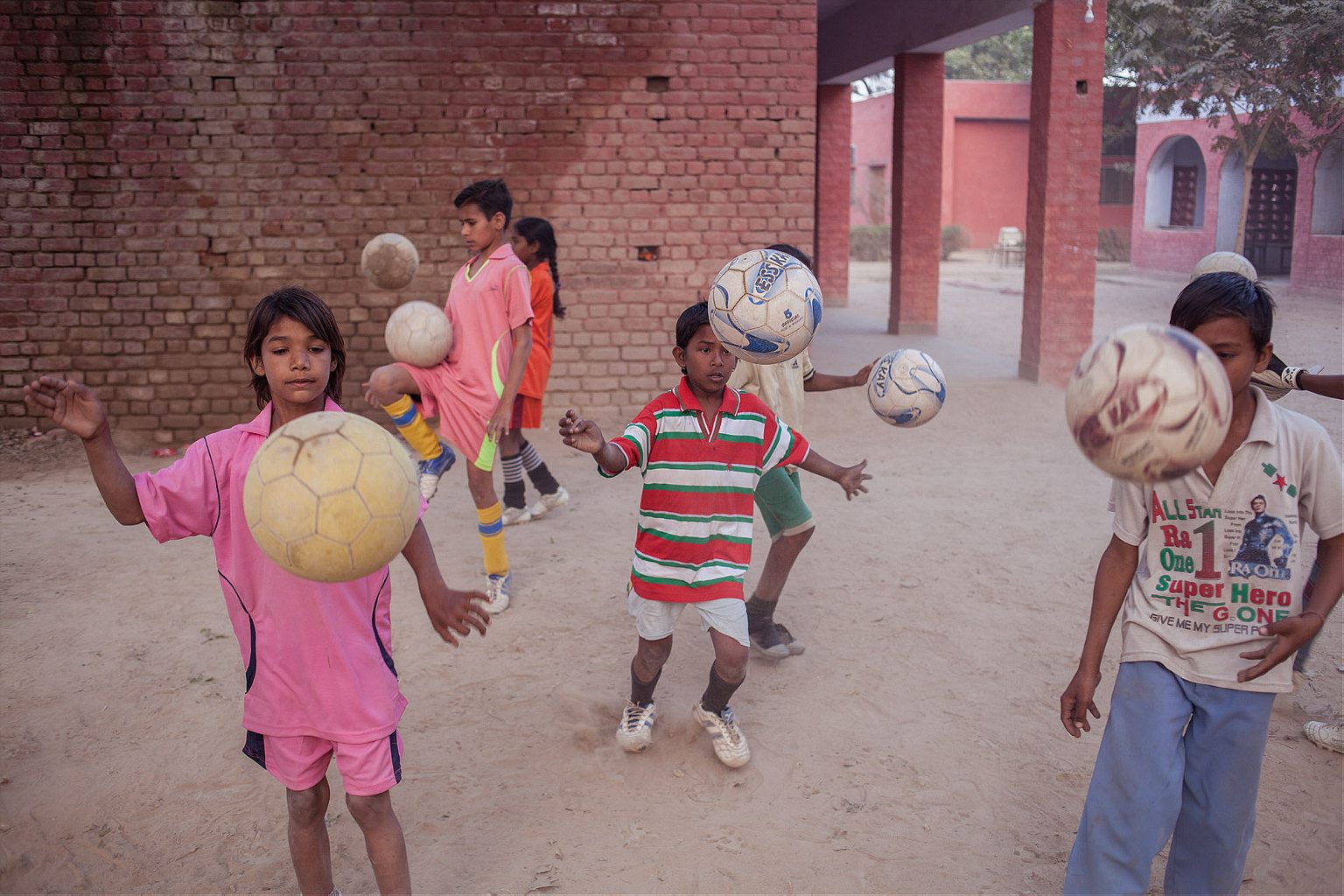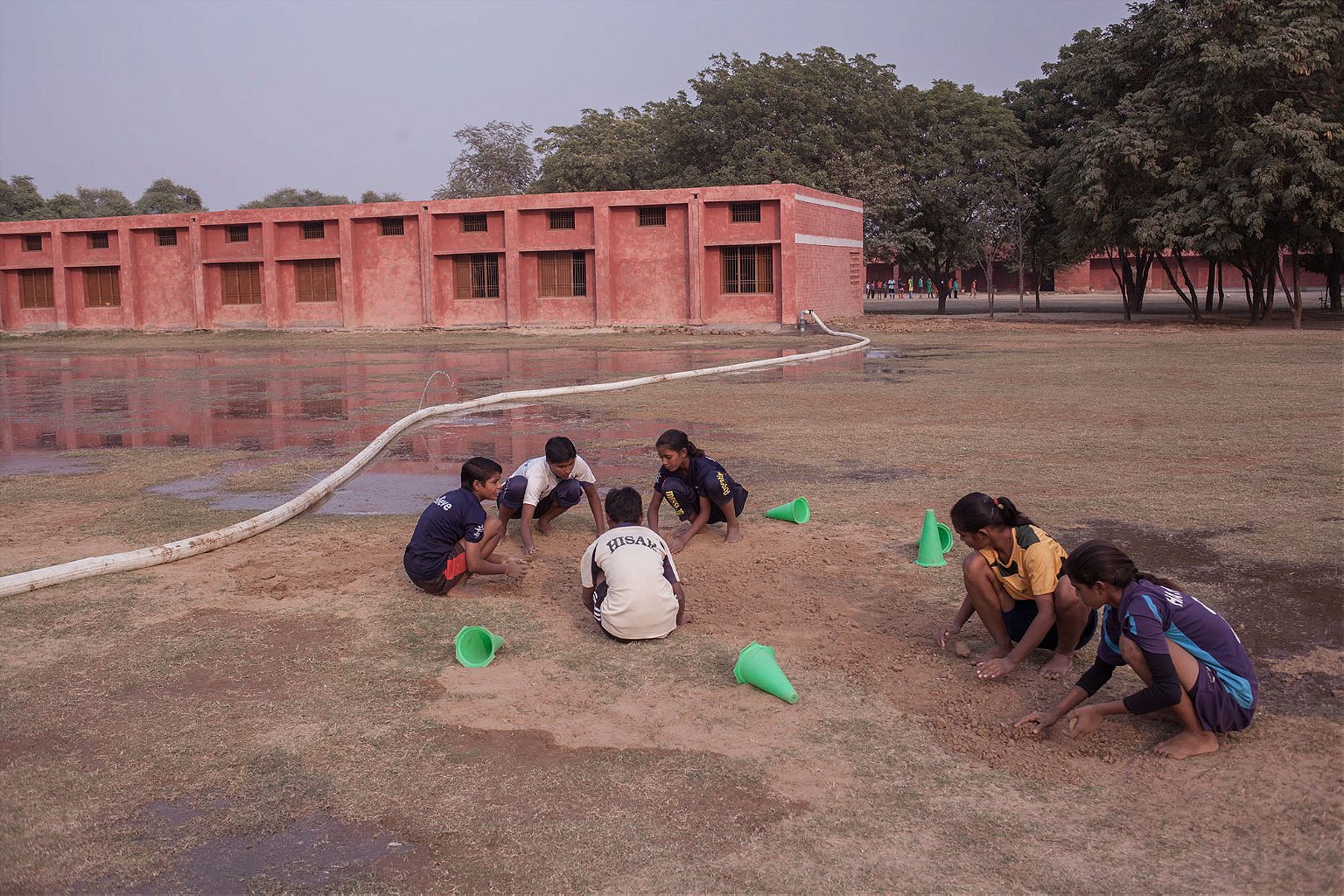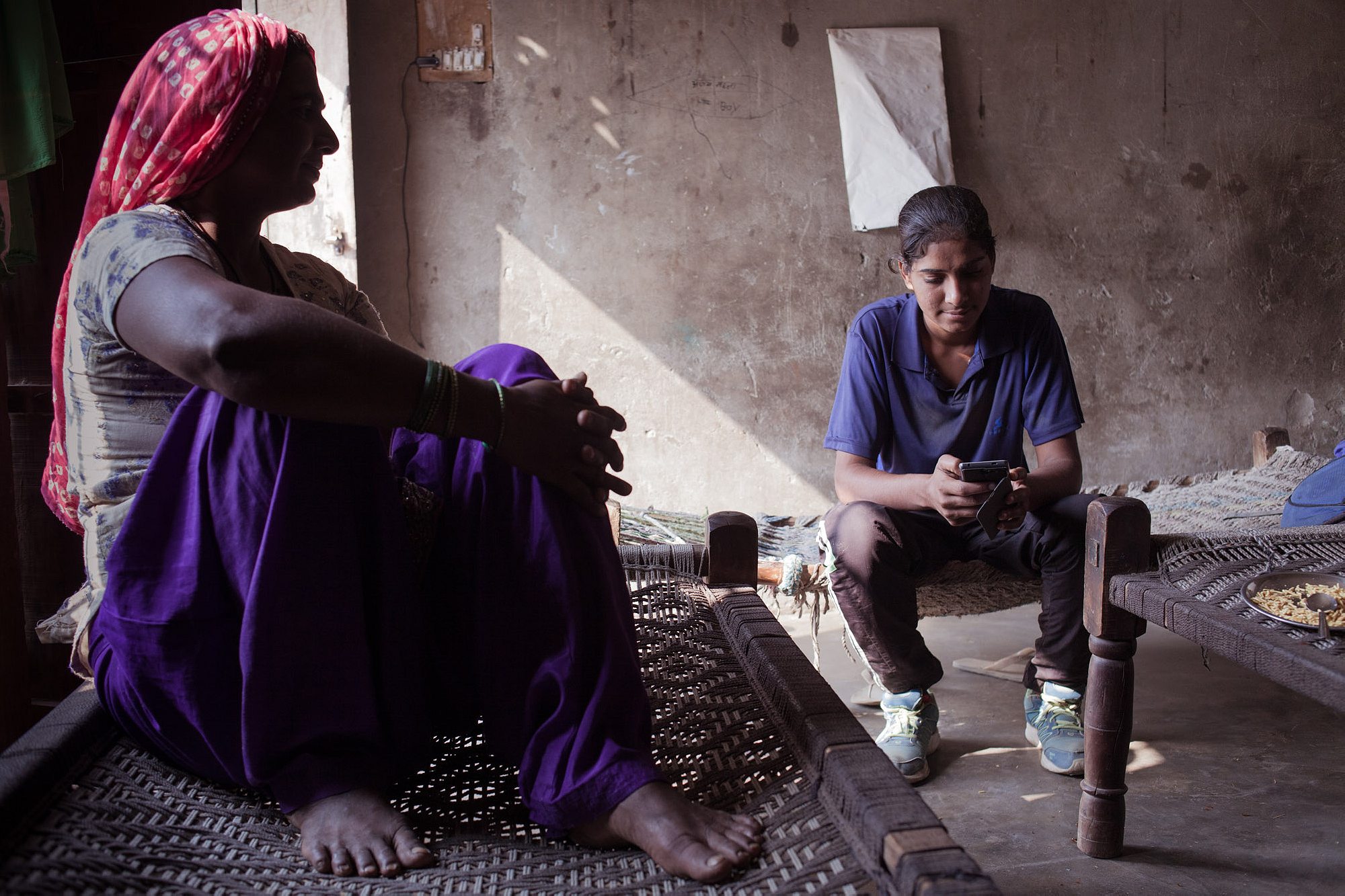The girls of this small Indian town have started a soccer revolution.
It’s a cold, foggy morning in the village of Mangali, a few hours northwest of New Delhi. Groups of young girls are slowly filing into the pink, brick-walled compound of the Government Girls Senior Secondary School. Dressed in long pants and sweaters, many carry plastic bags with a change of school clothes.
The girls gather to play soccer on these grounds every morning at 6 a.m. After their school day, they’ll train here again at 3:30 p.m. before heading back home to help their families in the fields or with cooking.
Mangali is a rather large village by Indian standards. Its population of about 12,000 people is spread out over large swathes of land interspersed with fields of wheat and mustard. When Sukhwinder Dhillon was assigned by the government as a coach to train girls at this school 12 years ago, only about 16 girls came to practice.

At the time, villagers viewed Dhillon, who had played soccer at national-level tournaments until 2000, with a lot of suspicion. Though she had been trained at the National Institute of Sports in Punjab, many accused her of ‘spoiling’ their daughters by encouraging them to play sports and tried to get her transferred. The state of Haryana in northern India has long been notorious for having the lowest female to male sex-ratio in the country, and female foeticides and honor killings are daily occurrences.
When Dhillon first came to teach, the ground was covered in weeds and bushes. “We couldn’t afford a decent ball to play with and the girls didn’t even have proper shoes,” she says. “We would travel to neighboring Punjab to buy subsidized sporting equipment and would pool our resources to buy clothes and shoes for the girls.” She recalls the days when they only had one ball to practice with, which endured numerous re-stitchings until it could no longer be used.



But after winning The Subroto Cup, a prestigious soccer tournament, the village could finally afford to clear the stones off the ground, level the field, and build changing rooms, a gym, and a sports room for spare balls and other equipment. After that, the Mangali girls’ soccer teams started winning more and more championships across the country.
With victory came cash prizes and a change in attitude from the village. Today, roughly 130 girls aged seven to 22 play soccer here. There is no official team name, but they all practice as one. Some girls are now the sole breadwinners for their families thanks to their successes in soccer. Others depend entirely on making a living through soccer. The coaches try to have the older girls admitted to the same university so they can continue to play together on the same team.
Monica Mehla, 21, is one of the oldest soccer players here and a well-respected goalkeeper in Mangali, having played at several tournaments across India. Her father works as a daily wage laborer and her mother works as hired labor on nearby fields. They own one cow and one buffalo, and live with their three children in an unfinished one-room brick house.

Mehla is the first person in her family to be university-educated and recently bought herself a Sansui smartphone with prize money. “We are a village of farmers, daily wage laborers, and unemployed people,” Mehla said of typical jobs in her village. “A job as a police constable is the only job I can hope to get with my background in sports; there are no jobs around here.”
Many houses in Mangali still don’t have electricity or running water, and unemployment is rife. The girls struggle to maintain the nutritious diet required to play the sport, and recovering from injuries can be difficult. Instead of resting, many use their off time to help out in the fields or with household chores.


Yet for those who are able to get through these obstacles, soccer can be both a way out of poverty and an opportunity to live on their own terms. They can push off marriage to a later age and try to find a job in the city—if their families allow it.
Today, most villagers do what they can to support the girls: subsidize vegetables from their fields, or even pay for bus tickets during tournaments. The stigma against women playing sports is disappearing in Mangali. The girls have done something that the boys couldn’t: brought recognition to this unknown part of Haryana.
This story was edited by Emily Ziemski and was supported by the IWMF (International Women’s Media Foundation).